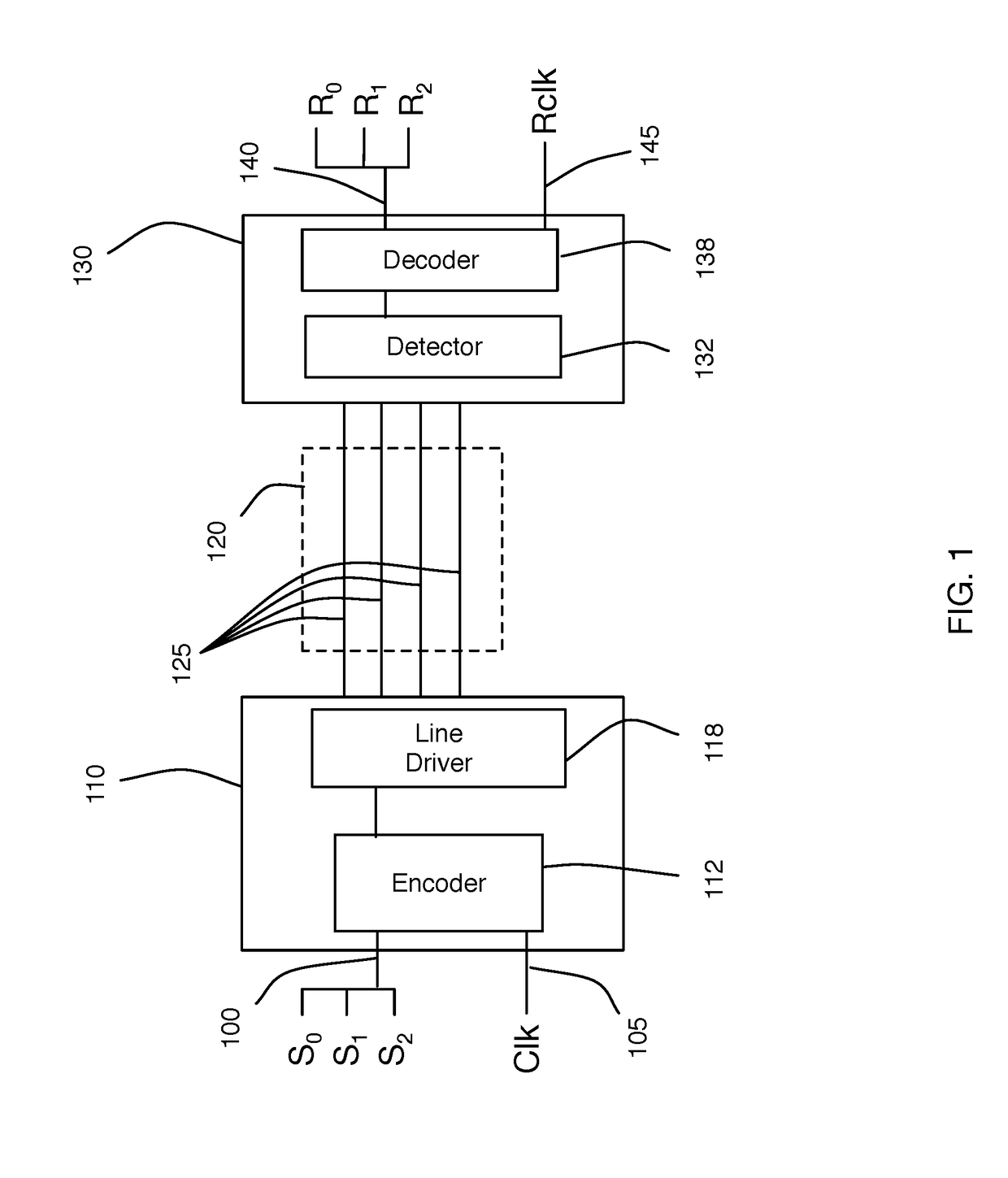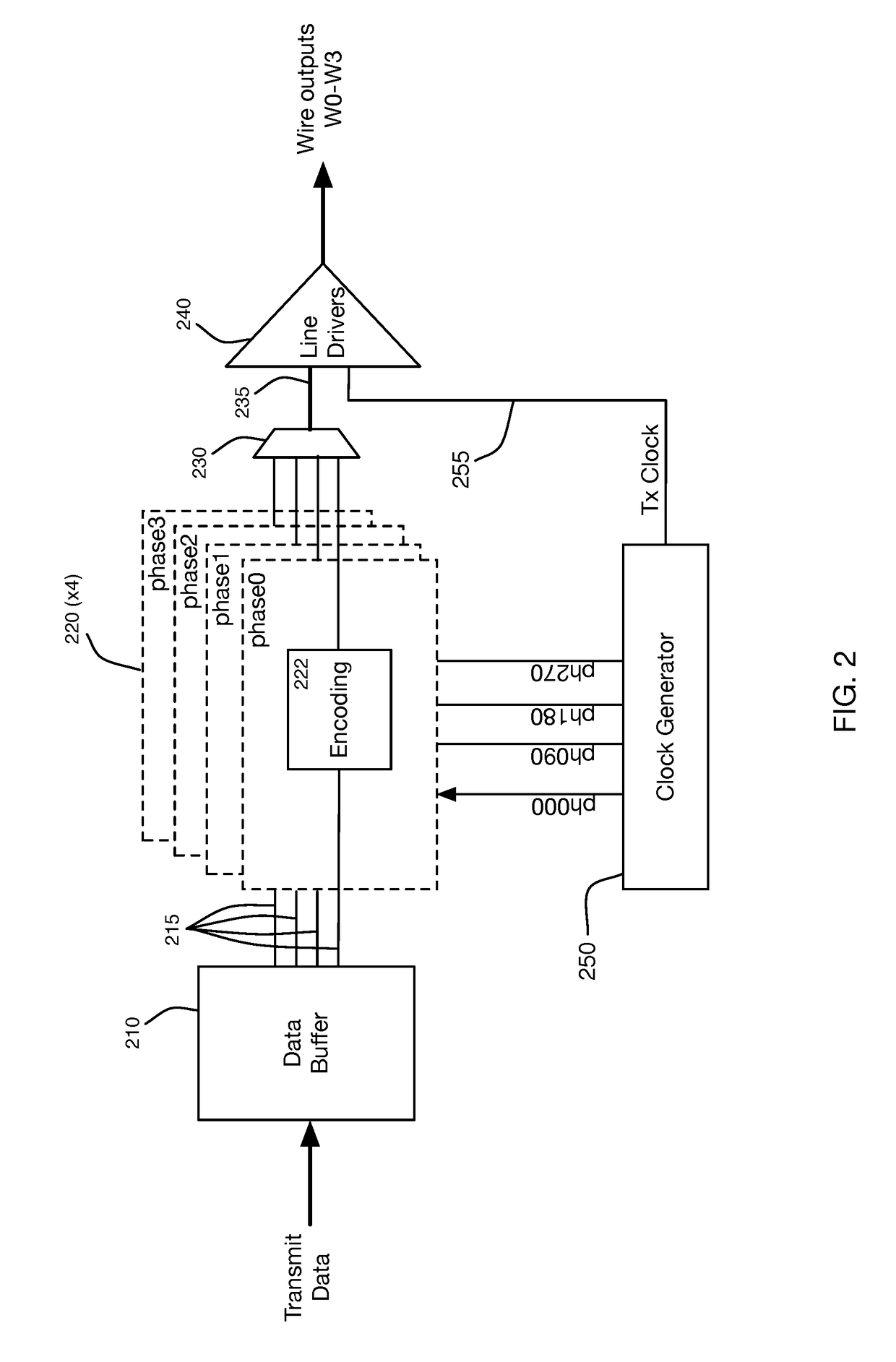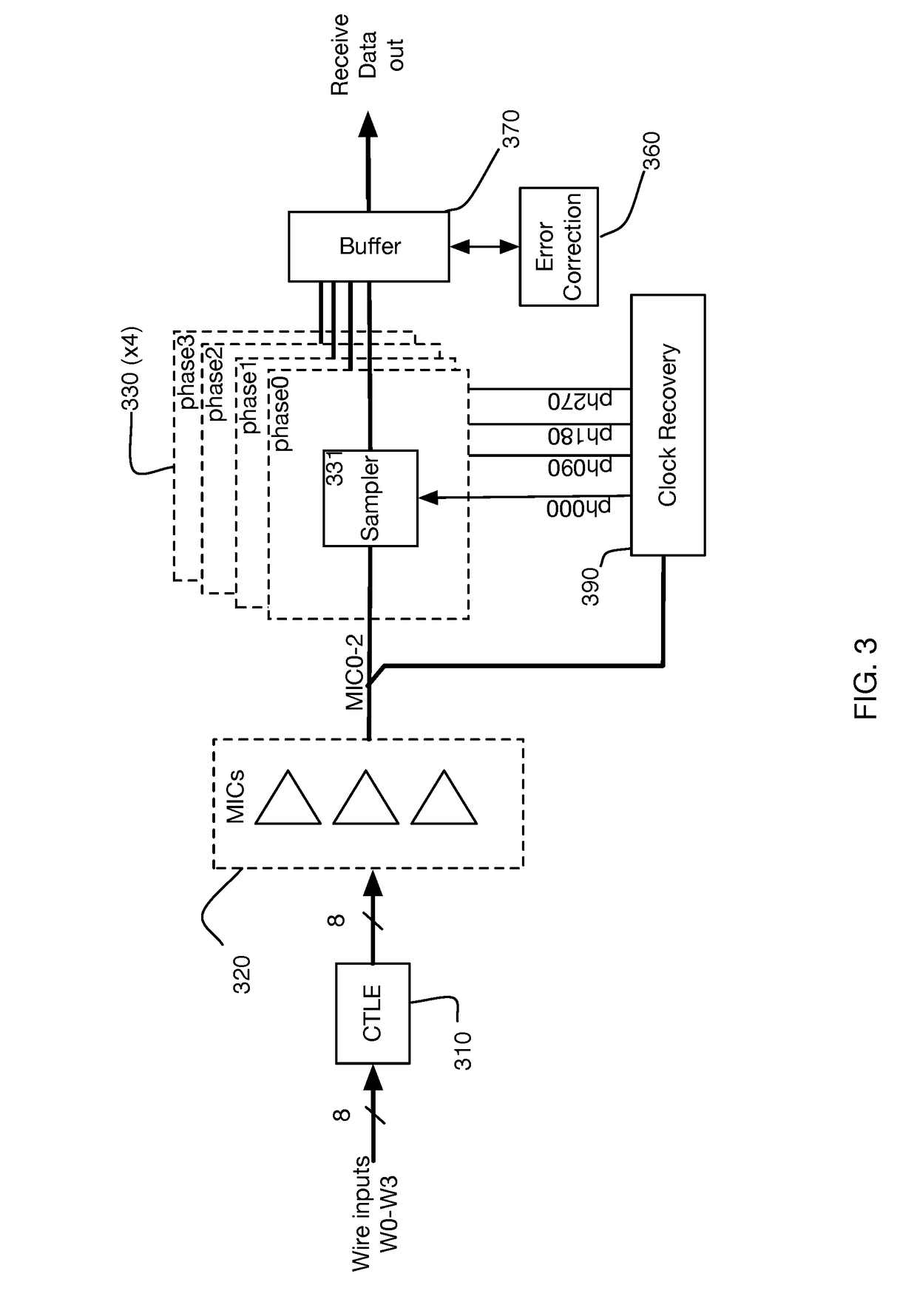Multi-wire permuted forward error correction
a forward error correction and permutation technology, applied in the field of communication system circuits, can solve the problems that significantly affect the overall communication latency, and achieve the effects of optimizing the power consumption, pin efficiency and speed trade-offs, and increasing aggregate bandwidth
- Summary
- Abstract
- Description
- Claims
- Application Information
AI Technical Summary
Benefits of technology
Problems solved by technology
Method used
Image
Examples
example embodiment
[0040]For purposes of explanation and without implying limitation, the reference system for the following descriptions is assumed to have the following characteristics:[0041]Underlying transport providing three sub-channels using ENRZ coding at a 25 Gigasymbol / second rate, equivalent to a 40 picosecond unit interval.[0042]Uncorrected BER in the range of 10E-8 to 10E-9, comprised of both random bit and short burst errors[0043]Corrected FER or BER less than 10E-19[0044]FEC latency of 80 ns or less.
[0045]FIG. 1 is a block diagram of a system that may serve as the physical transport for such a system, with transmitter 110 communicating over a multiwire 125 communications channel 120 to receiver 130.
[0046]FIG. 2 illustrates a more detailed block diagram of transmitter 110. In a practical embodiment operating at the example speeds, data will typically be provided using a fairly wide-word interface, to allow a slower transfer rate, with Data Buffer 210 providing the necessary temporary sto...
PUM
 Login to View More
Login to View More Abstract
Description
Claims
Application Information
 Login to View More
Login to View More - R&D
- Intellectual Property
- Life Sciences
- Materials
- Tech Scout
- Unparalleled Data Quality
- Higher Quality Content
- 60% Fewer Hallucinations
Browse by: Latest US Patents, China's latest patents, Technical Efficacy Thesaurus, Application Domain, Technology Topic, Popular Technical Reports.
© 2025 PatSnap. All rights reserved.Legal|Privacy policy|Modern Slavery Act Transparency Statement|Sitemap|About US| Contact US: help@patsnap.com



